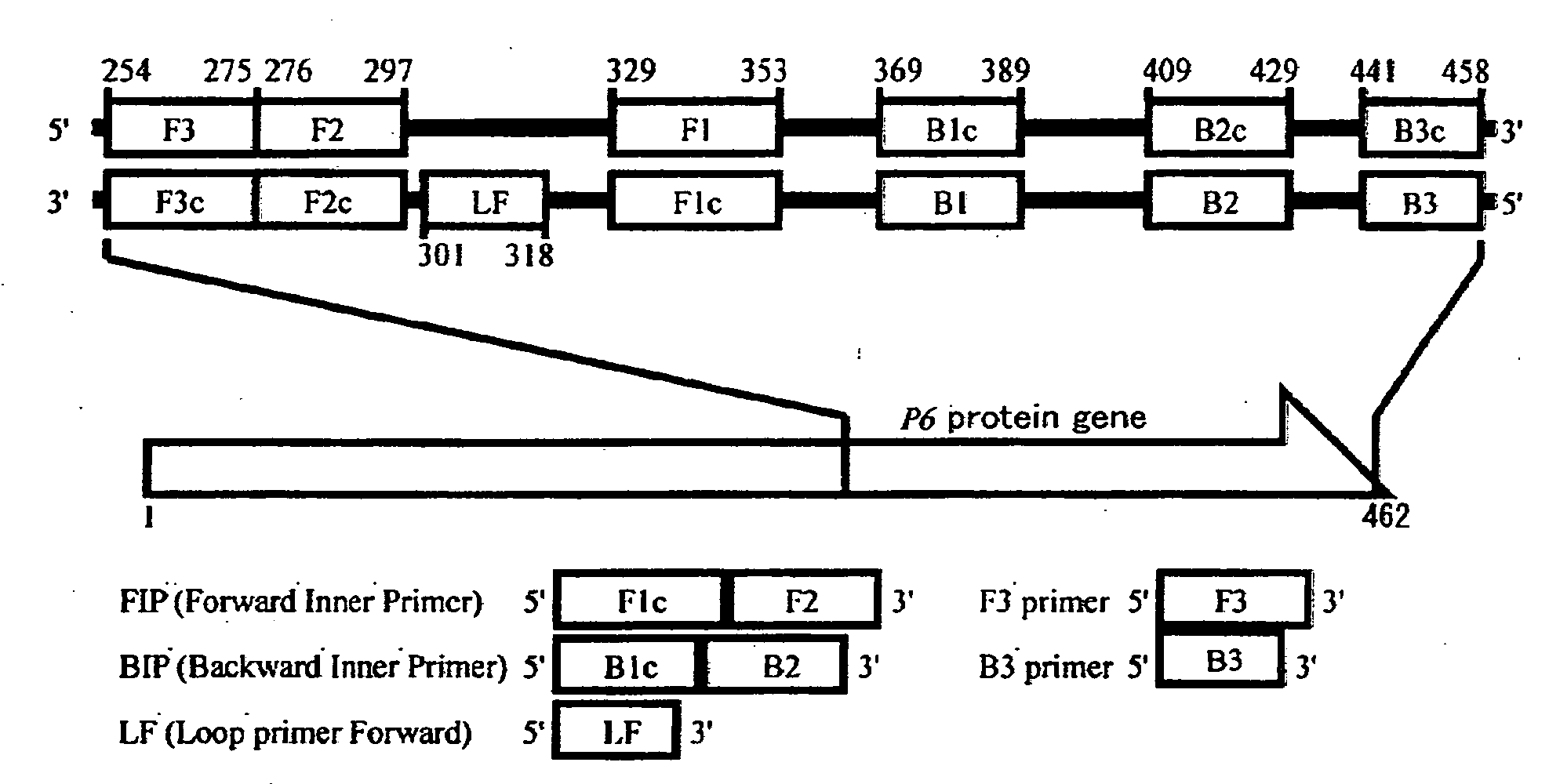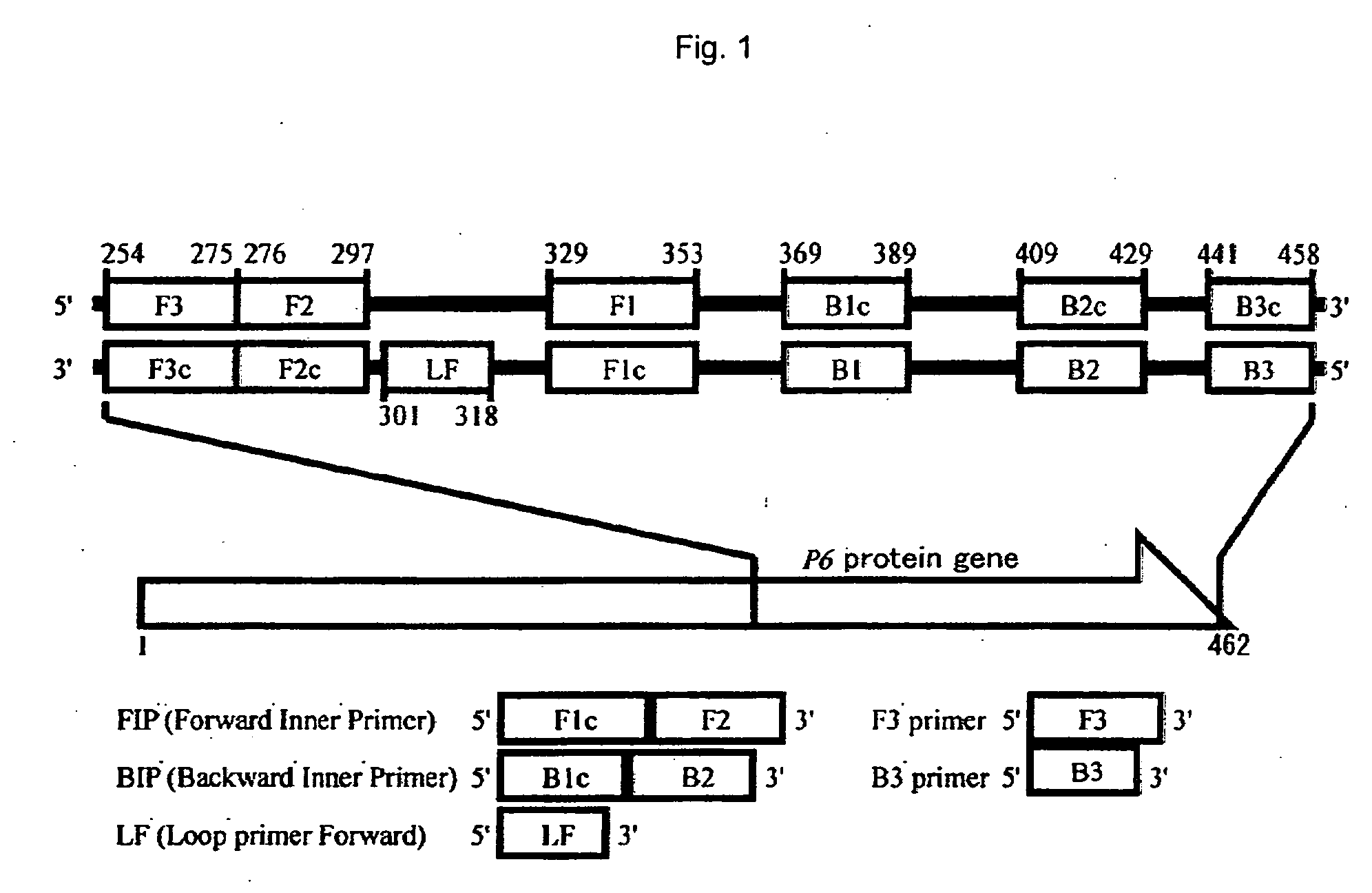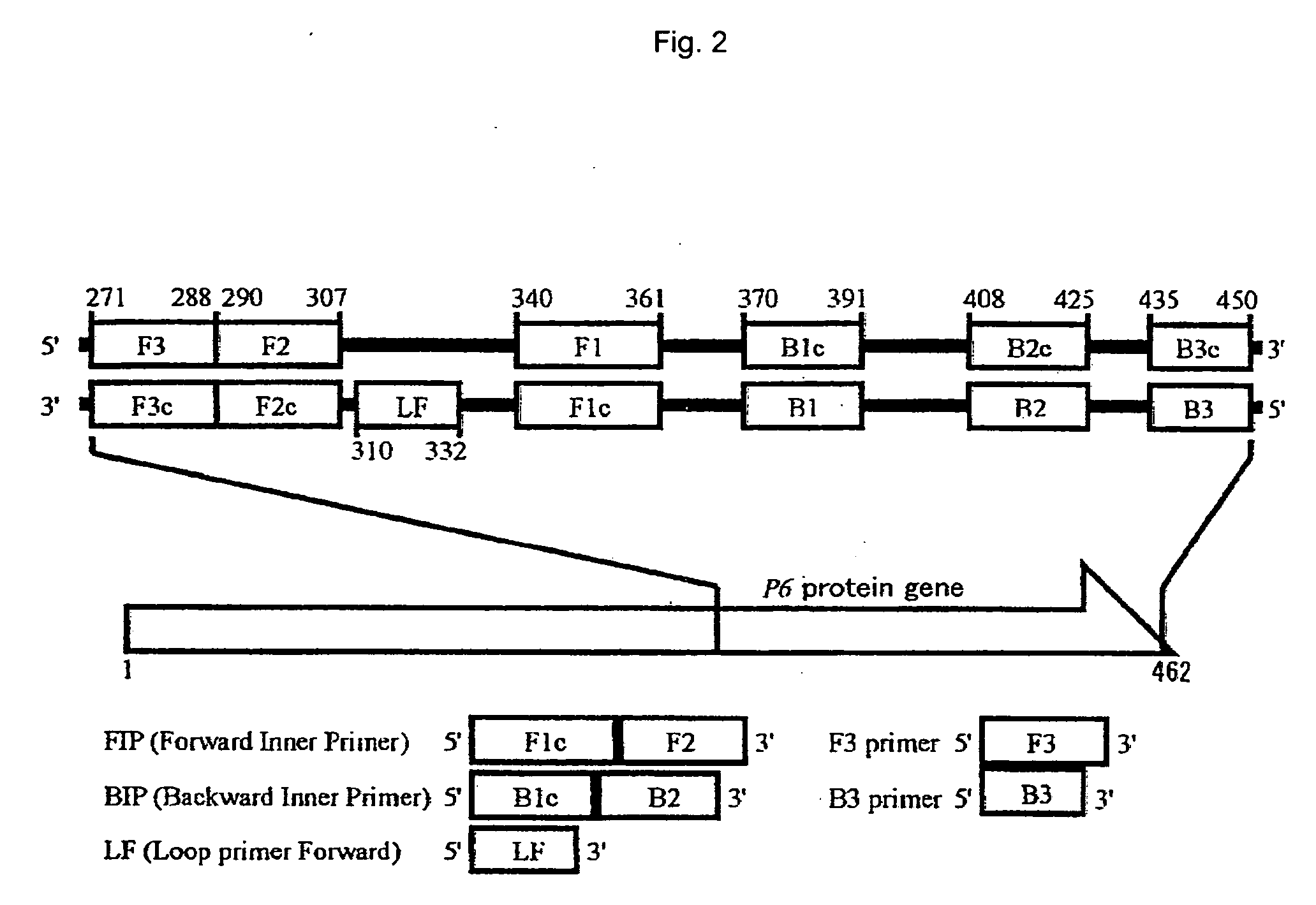Method of detecting influenza bacillus, primer set for detection of influenza bacillus and kit for detection of influenza bacillus
a technology of influenza bacillus and kit, which is applied in the field of methods for detecting haemophilus influenzae, can solve the problems of affecting the clinical diagnosis and subsequent treatment of various resistant microorganisms, affecting the detection efficiency of bacterial strains, etc., and achieves excellent specificity.
- Summary
- Abstract
- Description
- Claims
- Application Information
AI Technical Summary
Benefits of technology
Problems solved by technology
Method used
Image
Examples
first embodiment
[0056]The method of detecting H. influenzae of the present embodiment comprises amplifying nucleic acid according to the LAMP method using nucleic acid contained in an analyte as a template, and determining the presence or absence of H. influenzae based on the presence or absence of the amplified product, so as to detect H. influenzae.
[0057]The LAMP primer set used in the detection method of the present embodiment targets a P6 protein gene encoding a P6 protein that is a surface protein characteristic of H. influenzae. In the above primer set, all primers have a nucleotide sequence that is identical to or complementary to a partial nucleotide sequence in a nucleotide region located downstream of bp 90 of the P6 protein gene of H. influenzae, and at least one primer has a nucleotide sequence that is identical to or substantially identical to a partial nucleotide sequence in the nonhomologous region ranging from bp 90 to 183, or from bp 337 to 462 of the P6 protein gene of H. influen...
second embodiment
[0108]The LAMP primer set used in the detection method of the present embodiment targets capsulation locus region II encoding the capsule of Hib. In the above primer set, all primers have a nucleotide sequence that is identical to or substantially identical to a partial nucleotide sequence in the region ranging from bp 1 to 6,653, or a nucleotide sequence complementary thereto. Examples of such a LAMP primer set include those as described in Examples 11 to 19.
[0109]FIGS. 12 and 13 show the position of the LAMP primer set of Example 11, given as an example of the present embodiment, which corresponds to that in the capsulation locus, and the structure of each primer of the above LAMP primer set. In addition, FIG. 14 shows the correlation between the primers of the examples and sequence numbers in the sequence listing representing the nucleotide sequences of the above primers.
[0110]FIG. 12 includes 7 columns. Each column consists of 2 or 3 lines. The line with the term “No.” in each c...
PUM
| Property | Measurement | Unit |
|---|---|---|
| Time | aaaaa | aaaaa |
| Time | aaaaa | aaaaa |
| Mass | aaaaa | aaaaa |
Abstract
Description
Claims
Application Information
 Login to View More
Login to View More - R&D
- Intellectual Property
- Life Sciences
- Materials
- Tech Scout
- Unparalleled Data Quality
- Higher Quality Content
- 60% Fewer Hallucinations
Browse by: Latest US Patents, China's latest patents, Technical Efficacy Thesaurus, Application Domain, Technology Topic, Popular Technical Reports.
© 2025 PatSnap. All rights reserved.Legal|Privacy policy|Modern Slavery Act Transparency Statement|Sitemap|About US| Contact US: help@patsnap.com



